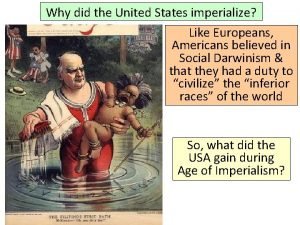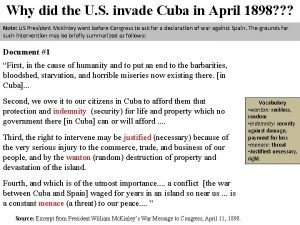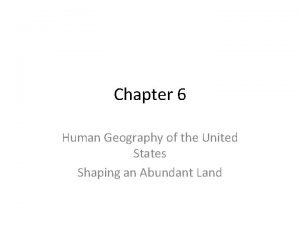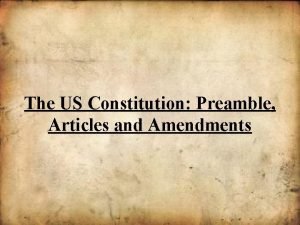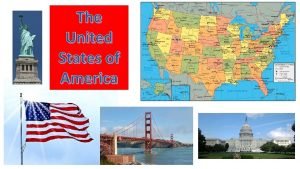Why Does the United States Have HyperIncarceration Christopher


















- Slides: 18

Why Does the United States Have Hyper-Incarceration? Christopher Slobogin Osher Lecture February 12, 2016

U. S. Imprisonment Rates 1973: 96 per 100, 000 Today: 650 per 100, 000

Year Prisoner-years per murder 1910 1923 1933 1943 1953 1963 1973 1983 1993 2003 10 8 11 20 23 25 10 21 38 65

100 90 80 70 60 50 U. S. Totals 40 30 20 10 0 World's Crime World's Prisoners

2. 3 million 1. 6 million U. S. China U. S. - China Population U. S. - China Prison Population

• “Residual US punishment is not working” (Spamann, 2014) • “Incarceration since the 1970 s had, at best, a modest impact on crime” (Mc. Crary & Sanga, 2012) • “Severe punishment in the U. S. has little to do with its crime drop, given analogous drops in many European countries” (Tselonia et al. , 2010)

6 5 4 3 2 1 0 U. S. Imprisonment Rate European Imprisonment Rate

U. S. v. European Sentencing • Death Penalty (we have it; they don’t) • Life Sentences for Juveniles (we have them; most of them don’t) • Life Without Parole for Adults (we love it; Europeans don’t) • Determinate Sentencing, Mandatory Minimums, and Truth-in-Sentencing (popular in U. S. ; Europe has mostly indeterminate sentences) • Use of prison (Europe: 20 -30% of offenders confined; avg. sentence of 1 year; U. S: 70%, 3 years) • Incarceration of non-violent offenders (our rate is 2 ½ times higher than theirs)

Why?

Populism

Individualism

Capitalism

Religiosity

Race and Drugs

Localism

Constitutional Rights

Why, Again? Populism—Democracy Individualism—Freedom Religiosity—Faith War on Drugs—Safety Capitalism—Competition & initiative Localism—Decentralized power & experimentation • Bill of Rights—Limits on all government power • • •

Positive Developments • Decarceration & Budgets (democracy, faith, free enterprise & local experimentation) – Michigan’s local re-entry programs (some faith-based) – Illinois, Texas and N. J. : community correctional programs (privately-run, with some faith-based) – Multi-systemic therapy for juveniles (private) • Decarceration & the Constitution (freedom, individualism, and experimentation) – Spears (2009); Plata (2011); Montgomery (2016) – Specialized courts (e. g. , drug courts) that offender chooses to enter
 Reported speech do you want to dance
Reported speech do you want to dance We have pacified some thousands of the islanders
We have pacified some thousands of the islanders Why did the united states imperialize
Why did the united states imperialize Why did the united states invade cuba in 1898
Why did the united states invade cuba in 1898 Chapter 6 human geography of the united states
Chapter 6 human geography of the united states Pictures
Pictures How did nicholas novikov describe the united states
How did nicholas novikov describe the united states Which hemisphere is tokyo in
Which hemisphere is tokyo in Does sweden have states
Does sweden have states Was the united states on the axis powers or allied powers?
Was the united states on the axis powers or allied powers? Many _____ people have settled in this megalopolis.
Many _____ people have settled in this megalopolis. Sectionalism map of the united states
Sectionalism map of the united states Us pro soccer organization
Us pro soccer organization United states v nixon outcome
United states v nixon outcome United states student association
United states student association The united states ought to provide a universal basic income
The united states ought to provide a universal basic income Constitution preamble
Constitution preamble The united states in the caribbean 1776 to 1985
The united states in the caribbean 1776 to 1985 Physical features of the southeast region
Physical features of the southeast region


